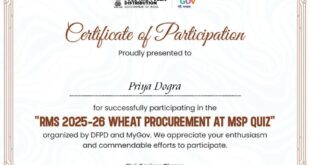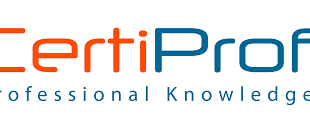SEMrush is a popular tool used for various aspects of digital marketing, including Technical SEO. Technical SEO focuses on optimizing the technical aspects of a website to improve its search engine visibility and ensure smooth crawling and indexing by search engine bots. Here’s how SEMrush can be utilized for Technical SEO:
- Site Audit: SEMrush offers a comprehensive site audit feature that scans your website for technical issues such as broken links, missing meta tags, duplicate content, page load speed, mobile-friendliness, and more. It provides detailed reports and recommendations to fix these issues.
- On-Page SEO Checker: This tool analyzes individual web pages and provides recommendations to optimize on-page elements such as meta tags, headings, content, and internal linking structure for better search engine rankings.
- Backlink Audit: SEMrush helps in identifying toxic or harmful backlinks pointing to your site, which can negatively impact your search rankings. It provides insights into the quality of backlinks and helps in disavowing spammy links.
- Keyword Research: While not strictly technical, keyword research is essential for SEO. SEMrush provides keyword research tools that help in identifying relevant keywords for your content and analyzing their search volume, competition, and trends.
- Competitive Analysis: SEMrush allows you to analyze the SEO strategies of your competitors, including their keywords, backlinks, and traffic sources. This information can help in identifying opportunities and gaps in your own SEO strategy.
- Site Structure Analysis: SEMrush can analyze the structure of your website and provide insights into how well it is organized for search engine crawlers. It helps in identifying issues such as poor URL structure, excessive redirects, or missing XML sitemaps.
- Local SEO: For businesses targeting local customers, SEMrush offers tools for optimizing local SEO, including local keyword tracking, citation management, and local listing audits.
Overall, SEMrush provides a comprehensive suite of tools for Technical SEO, helping website owners and digital marketers to identify and fix technical issues, optimize on-page elements, conduct keyword research, and stay ahead of the competition in search engine rankings.
OFFICIAL LINK FOR Semrush Technical SEO Certification EXAM: CLICK HERE
Semrush Technical SEO Certification Exam Answers
Question 1: What elements should text links consist of to ensure the best possible SEO performance?
- Nofollow attribute, anchor text
- a-tag with href-attribute, noindex attribute
- Anchor text, a-tag with href-attribute
Question 2: A good approach is to create internal competition. More links to different URLs have the same anchor text, easier for Google is to differentiate which of them is the one URL on your domain to be ranked for the given keyword.
- True
- False
Question 3: What are two the most commonly known best practices to increase crawling effectiveness?
- Multiple links to a single URL
- Using linkhubs
- Meta robots nofollow
- Interlink relevant contents with each other
- Internal, link-level rel-nofollow
Question 4: Choose three statements referring to XML sitemaps that are true:
- It is recommended to have URLs that return non-200 status codes within XML sitemaps
- There can be only one XML sitemap per website
- XML sitemaps must only contain URLs that give a HTTP 200 response
- XML sitemaps should usually be used when a website is very extensive
- It is recommended to use gzip compression and UTF-8 encoding
Question 5: Choose a factor that affects the crawling process negatively.
- A well-defined hierarchy of the pages
- Duplicate pages/content
- Content freshness
Question 6: Choose two statements that are false about the SEMrush Audit Tool.
- It can be downloaded to your local computer
- It can’t audit desktop and mobile versions of a website separately
- It provides you with a list of issues with ways of fixing
- It allows you to include or exclude certain parts of a website from audit
Question 7: What is the proper instrument to simulate Googlebot activity in Chrome?
- Reverse DNS lookup
- User Agent Overrider
- User Agent Switcher
Question 8: How often does the option to combine a robots.txt disallow with a robots.txt noindex statement make folders or URLs appear in SERPs?
- Occasionally
- Never
- Less than ones without no index
Question 9: True or false? It is NOT possible to have multiple robots meta tags.
- False
- True
Question 10: Choose two correct statements about a canonical tag:
- Each URL can have several rel-canonical directives
- Pages linked by a canonical tag should have identical or at least very similar content
- It should point to URLs that serve HTTP200 status codes
- It is useful to create canonical tag chaining
Question 11: Fill in the blank. It’s not wise to index search result pages because _____.
- they do not pass any linkjuice to other pages
- those pages are dynamic and thus can create bad UX for the searcher
- Google prefers them over other pages because they are dynamically generated and thus very fresh.
Question 12: PRG (Post-Redirect-Get pattern) is a great way to make Google crawl all the multiple URLs created on pages with many categories and subcategories.
- True
- False
Question 13: Choose the wrong statement.
- Proper pagination is required for the overall good performance of a domain in search results
- Pagination is extremely important in e-commerce and editorial websites
- It is important to have all sub-pages of a category being indexed
- rel=next and rel=prev attributes explain to Google which page in the chain comes next or appeared before it
Question 14: You have two versions of the same content in HTML (on the website and in PDF). What is the best solution to bringing a user to the site with the full navigation instead of just downloading a PDF file?
- Introducing hreflang using X-Robots headers
- Using the X-robots rel=canonical header
- Using the X-robots-tag and the noindex attribute
Question 15: What does the 4XX HTTP status code range refer to?
- Client-side errors
- Redirects
- Server-side errors
Question 16: Check all three reasons for choosing a 301 redirect over a 302 redirect:
- The rankings will be fully transferred to the new URL
- Link equity will be passed to the new URL
- The new URL won’t have any redirect chains
- To not lose important positions without any replacement
Question 17: When is it better to use the 410 error rather than the 404? Choose two answers:
- When there is another page to replace the deleted URL
- When the page existed and then was intentionally removed, and will never be back
- If the page can be restored in the near future
- When you want to delete the page from the index as quickly as possible and are sure it won’t ever be back
Question 18: What is the best solution when you know the approximate time of maintenance work on your website?
- Using the 500 status code with the retry-after header
- Using the 503 status code with the retry-after header
- Using the HTTP status code 200
- Using the noindex directive in your robots.txt file
Question 19: Choose three answers. What information can be found in an access-logfile?
- Passwords
- The method of the request (usually GET/POST)
- The time spent on a URL
- The server IP/hostname
- The request URL
Question 20: True or false? It is recommended to work with log files constantly, making it a part of the SEO routine rather than doing one-off audits.
- False
- True
Question 21: Which HTTP code ranges refer to crawl errors? Choose two answers.
- 4xx range
- 5xx range
- 2xx range
- 3xx range
Question 22: Choose two statements that are right.
- If you overlay your sitemap with your logfiles, you may see a lack of internal links that shows that the site architecture is not working properly
- Combining data from logfiles and webcrawls helps compare simulated and real crawler behavior
- It is not a good idea to combine different data sources for deep analysis. It’s much better to concentrate on just one data source, e.g. logfile
Question 23: Choose two answers. Some disadvantages of ccTLDs are:
- They have strong default geo-targeting features, e.g. .fr for French
- They need to be registered within the local market, which can make it expensive
- They may be unavailable in different regions/markets
Question 24: Choose two http response status codes that will work where there is any kind of geographical, automated redirect. We are talking about international requests from different geographical regions.
- 302 and 303
- 301 and 303
- 302 and 301
Question 25: You have site versions for France and Italy and you set up two hreflangs for them. For the rest of your end-users you plan to use the English version of the site. Which directive will you use?
- <link rel=”alternate” href=”http://example.com/” hreflang=”x-default”/>
- <link rel=”alternate” href=”http://example.com/en” hreflang=”en-au”/>
- <link rel=”alternate” href=”http://example.com/en” hreflang=”uk”/>
Question 26: True or false? The SEMrush Site Audit tool allows you only to define issues that slow down your website and does NOT give any recommendations on how to fix them.
- True
- False
Question 27: Choose two optimization approaches that are useful for performance optimization:
- Avoid using new modern formats like WebP
- Asynchronous requests
- Proper compression & meta data removal for images
- Increase the number of ССS files per URL
Question 28: True or false? Pre-fetch and pre-render are especially useful when you do not depend on 3rd party requests or contents from a CDN or a subdomain.
- True
- False
Question 29: Fill in the blank. According to the latest statistics, 60% or more of all results for high volume keyword queries in the TOP-3 have already been moved over to run on ______
- HTTPS
- FTP
- HTTP
Question 30: What are the two valid statements with regard to the critical rendering path (CRP)?
- The “Critical” tool on Github helps to build CCS for CRP optimisation
- CRP on mobile is bigger than on a desktop
- The non-critical CSS is required when the site starts to render
- There is an initial view (which is critical) and below-the-fold-content
Question 31: Choose the correct statement about mark-up.
- Changes in HTML can break the mark-up, so monitoring is needed
- Invalid mark-up still works, so there’s no need to control it
- Even if GSC says that your mark-up is not valid, Google will still consider it
Question 32: Choose the right statement about AMP:
- AMP implementation is easy, there’s no need to rewrite HTML and build a new CSS
- A regular website can never be as fast as an AMP version
- CSS files are not necessary to be inlined as non-blocking comparing to a regular version
- In 2021 pages’s performance in terms of the Page Experience scores will be more important than AMP
- Using AMP is the only way to get into carousel
Question 33: Fill in the blanks. When you want to use _____, make sure they are placed in plain HTML/X-robots tags. _____ injected by JavaScript are considered less reliable, and the chances are that Google will ignore them.
- hreflang tags
- rel=amp HTML tags
- Canonical tags
Question 34: Which type of mobile website version should you use to check if the “user agent HTTP header” variable is included to identify and provide the relevant web version to the right user agent?
- Independent/standalone mobile site
- Dynamic serving
- Responsive web design
Question 35: Choose a valid statement about AMP:
- Using AMP is the only way to get into the Google News carousel/box
- AMP implementation is easy, there’s no need to rewrite HTML and build a new CSS
- CSS files do not need to be inlined as non-blocking compared to a regular version
- A regular website can never be as fast as an AMP version
Question 36: What is link juice?
- The number of links pointing at a certain page
- The value a hyperlink passes to a particular webpage
- Optimized website link hierarchy
 Priya Dogra – Certification | Jobs | Internships
Priya Dogra – Certification | Jobs | Internships



